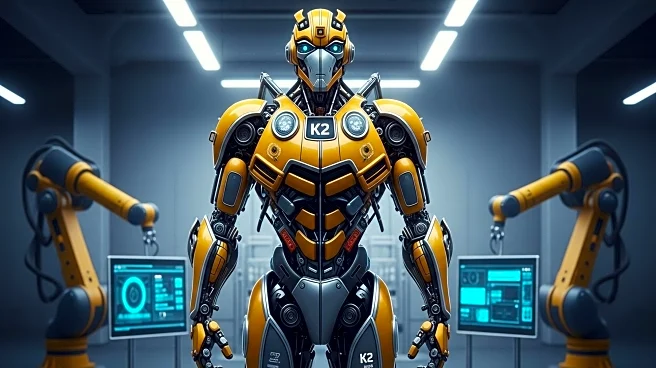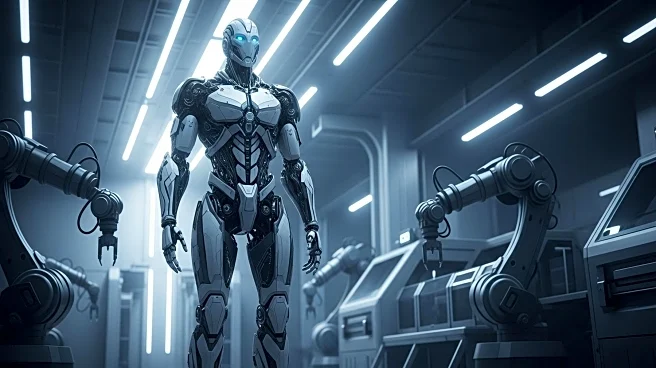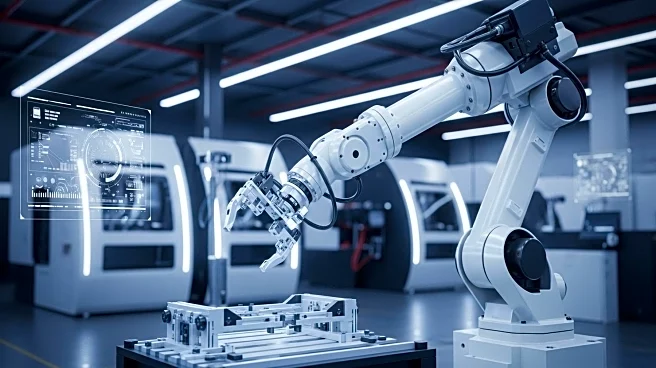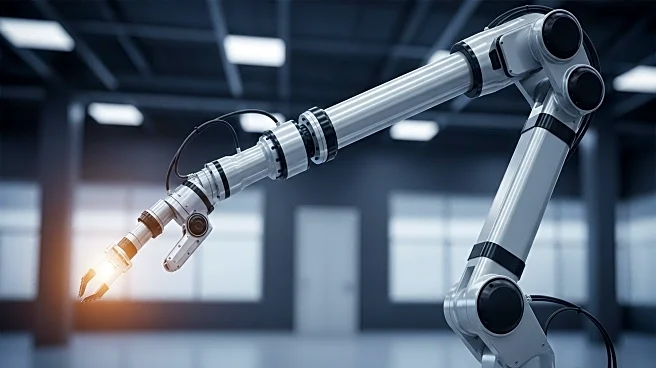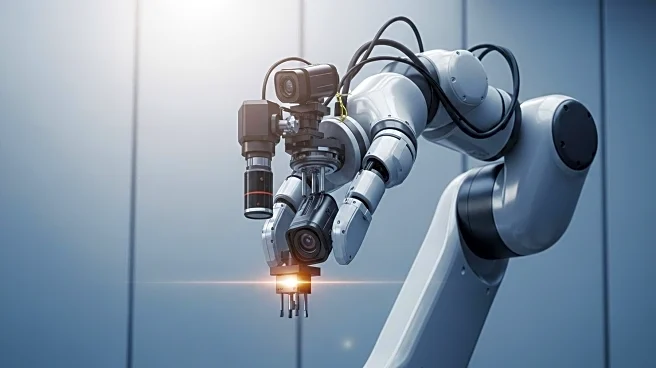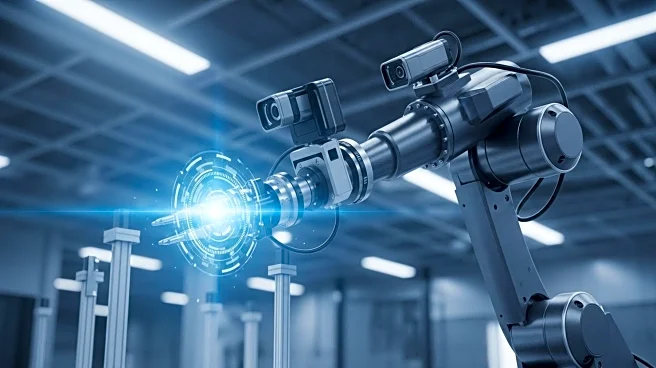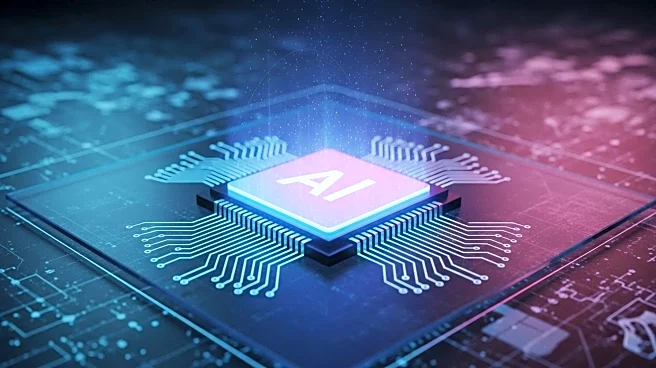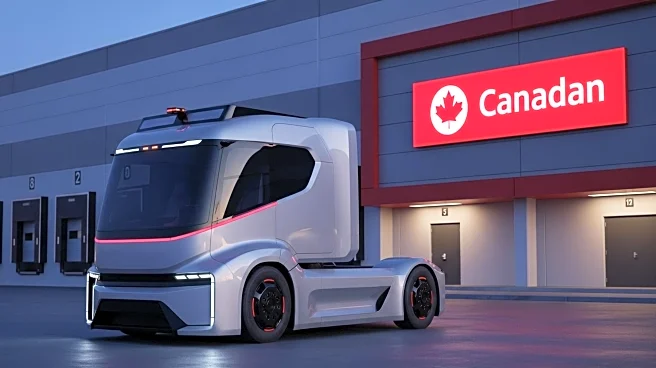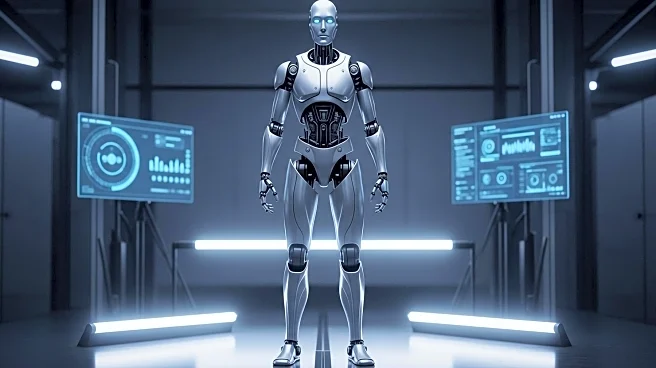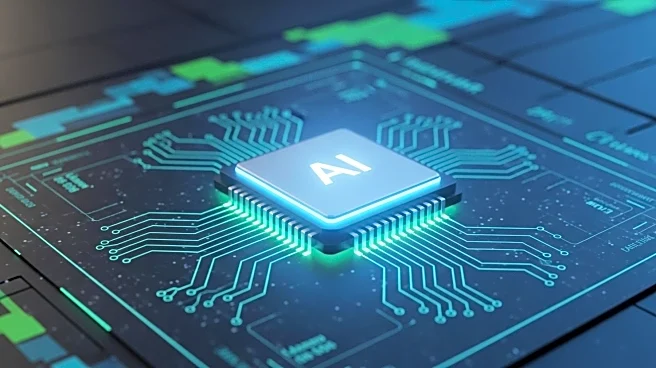What's Happening?
Shanghai-based Kepler Robotics has commenced mass production of its K2 'Bumblebee' humanoid robot, marking a significant milestone in the global humanoid robotics industry. The K2 Bumblebee is touted as the world's first commercially available humanoid robot built on a hybrid architecture, which combines mechanical and computational structures to enhance performance. The robot is designed for industrial applications, capable of navigating factory floors, executing assembly work, and performing tasks in logistics centers. It features a dual-arm payload capacity of 30 kg and utilizes a semantic task-processing system to follow natural language commands. Priced at approximately $34,000, the K2 Bumblebee offers a more affordable option compared to previous prototypes, facilitating broader adoption by businesses. Kepler has already secured framework agreements for several thousand units, with contracts valued in the hundreds of millions of yuan.
Why It's Important?
The mass production of the K2 Bumblebee represents a shift from research prototypes to large-scale deployment, potentially transforming the humanoid robotics industry. By lowering the cost of adoption, Kepler Robotics is making advanced robotic technology accessible to a wider range of businesses, which could lead to increased productivity and safety in industrial settings. The robot's ability to perform repetitive tasks and operate in high-risk environments may reduce human labor costs and enhance operational efficiency. Additionally, the integration of hybrid architecture and advanced learning systems positions the K2 Bumblebee as a versatile tool for various applications, from manufacturing to public demonstrations.
What's Next?
Kepler Robotics plans to scale manufacturing and expand its humanoid robotics ecosystem by collaborating with supply chain partners and strategic investors. The company aims to establish the 'first year of mass production' for humanoid robots, potentially leading to further innovations and applications in the field. As the K2 Bumblebee becomes more widely adopted, businesses may explore new ways to integrate humanoid robots into their operations, potentially driving further advancements in robotics technology.
Beyond the Headlines
The introduction of the K2 Bumblebee could have broader implications for the robotics industry, including ethical considerations related to the displacement of human workers and the need for regulatory frameworks to ensure safe and responsible use of humanoid robots. As these robots become more prevalent, discussions around their impact on employment and societal norms may intensify, prompting policymakers to address these challenges.

